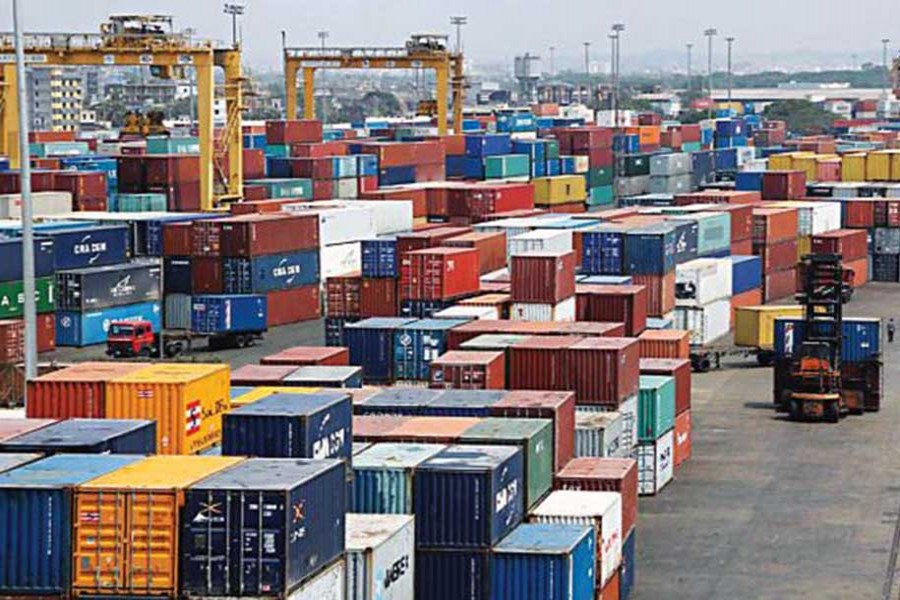For long, Bangladesh was depending on only one product - readymade garment or RMG for its export to other countries. Roughly, 80 per cent of Bangladesh's $33 billion export comes from this item, the others like jute goods, leather and pharmaceutical items account for the rest of the value.
We had been hearing of the needs of export diversification from the policymakers and business leaders for long, but the truth is it is yet to happen. The failure of Bangladesh in its export products diversification lies within the country, sometimes the absence of appropriate policy support kept the effort off track, sometimes, the vigour to search markets for other products was not there, sometimes Bangladesh felt complacent of what it was doing already with its export.
The country would have remained a desperately poor country had its 60 million or so people have not been working outside the country. Known as the Non-Resident Bangladeshis (NRBs), they are sending home $ 15 billion per annum. What Bangladesh is depending on to meet its foreign exchange needs is the remittances from the NRBs amounting to $ 15 billion p.a. and the export value amounting to $ 33 billion.
The net value addition to export value is far less than the remittances sent home by the NRBs. The Bangladesh government sends abroad thousands of people as workers, though most of such workers are low-paid ones. On the other hand, there are many other thousands who go abroad, especially to advanced economies, on their own. What drives so many Bangladeshi people to go abroad? Poverty and unemployment at home are the two reasons why so many people from Bangladesh are making desperate attempts for going abroad. But how long will Bangladesh remain an important labour supply country to the world?
The world, at one stage, may shut its door before Bangladesh people, or so to say, to other migrants also from other countries. Even if other countries do remain open in the foreseeable future for migrant workers, they might look for skilled and educated workers as against the kind Bangladesh is sending abroad now. So, educating and training at home to make the aspirant migrant workers up to global standard have no alternative. But is Bangladesh on the right course in this respect? For having a sustainable higher growth in terms of increasing GDP at home Bangladesh needs to export more and also import more.
Whatever opportunity Bangladesh availed of in term of its RMG export was offered by the European Union first, later on, by other advanced economies like the USA, Canada and Japan. These doors of export were opened through trade talks under the sponsorship of the WTO, but unfortunately those doors meant for making global trade free are now shut, mainly due to the non-cooperation and opposition, in various forms, of the USA, which once and all through in the contemporary trade history was the champion of global free trade. The about-turn by the USA on the global free trade stage put the whole process of globalisation in to jeopardy.
The most glaring failure of Bangladesh in its drive towards exporting more was that till now it could not become any partner in any global free trade block, while other countries with similar sizes of economies could have become so. There is no possibility in the coming days that Bangladesh will have freer atmosphere with its export to the global community. Bangladesh talks of Free Trade Agreements (FTAs) with other countries but at the end does not sign any, or cannot sign any. The neighbouring countries are bypassing Bangladesh in their quest for having more trade partners globally, but Bangladesh remained there where it was a decade back. Where Bangladesh would export if it wants to export more? The existing markets have limited appetite for Bangladesh's RMG goods and the export surge in such items will soon reach its saturation point. If Bangladesh wants to export more it must depend on other items like leather and leather goods, pharma items, agro products etc. For export Bangladesh needs markets which can only come, in the present scenario, from being partners with other countries through FTAs or by being an associate member of the Asean or joining trade blocks like the Regional Comprehensive Economic Partnership (RCEP) led by China. By remaining outside of major trade blocks, Bangladesh cannot bring more FDI to its economy. Foreign investors see where they can sell their products if they invest in Bangladesh. Other countries like Vietnam started late in tying itself with the global trade system, but this country is now much ahead of Bangladesh in export value and the number of export items it is sending out to other countries. Agro products like vegetables, potato, tomato, dry fruits have prospects for export. But maintaining strict quality in these products is important while trying to send them abroad. There is a rising demand for organic agro products aboard and Bangladesh should try to send such products while trying to diversify the export basket.
The writer is professor of Economic, the University of Dhaka,
email: [email protected]


